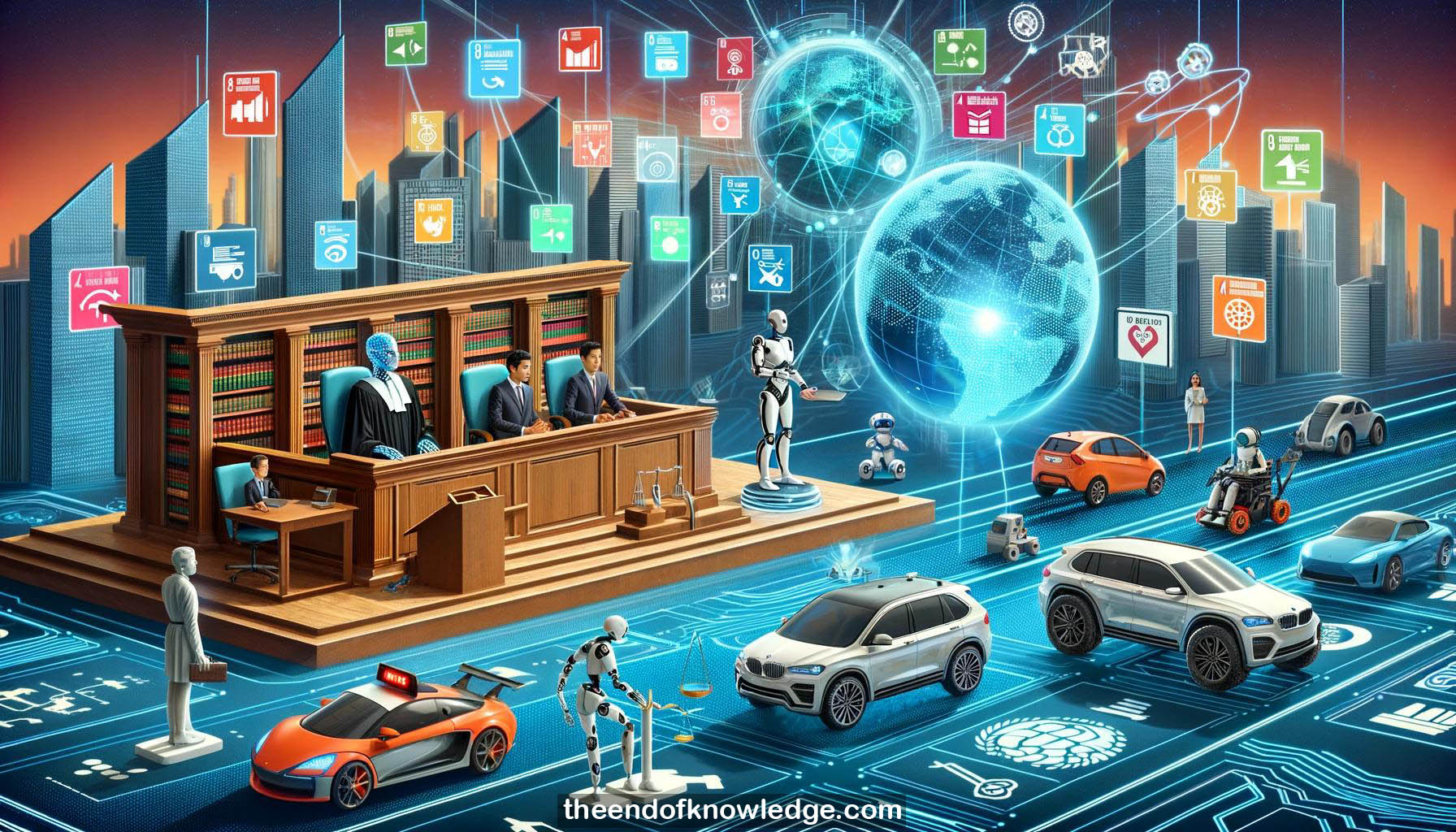 >
>
Concept Graph & Resume using Claude 3 Opus | Chat GPT4o | Llama 3:
Resume:
1.- Introduction and Goals: The AI for Good summit aims to identify practical AI applications to advance the Sustainable Development Goals (SDGs) and scale solutions for global impact.
2.- Role of AI in Global Society: AI is central to the transformation towards a digital society, and legal professionals must address the ethical and moral implications of AI and technology.
3.- Regulation and Law: Lawyers and regulators need to find a balance between enabling AI benefits and mitigating risks, ensuring public good and addressing the regulatory challenges AI presents.
4.- Historical Context: The term "artificial intelligence" was coined in 1956, reflecting both ambitious goals and challenges in meeting AI expectations over the years.
5.- Bias in AI: The lack of diversity in AI's early development has led to biases in AI systems, a problem that persists today.
6.- Public Perception and Fear: Historical and contemporary fears about AI, such as those depicted in popular culture, influence public perception and highlight potential existential risks.
7.- Current AI Capabilities: AI today is mostly narrow AI, performing specific tasks, and includes machine learning, enabling systems to improve without human intervention.
8.- Regulatory Challenges: AI presents unique regulatory challenges in terms of speed, autonomy, and opacity, each requiring distinct approaches to address effectively.
9.- Speed of AI: AI systems operate at speeds beyond human capabilities, posing challenges for regulatory frameworks that are designed for human-paced interactions.
10.- Autonomy of AI: AI systems can make decisions independently, complicating accountability and legal responsibility, especially in cases like autonomous vehicles.
11.- Opacity of AI: AI's complexity and "black box" nature make it difficult to understand and regulate, posing transparency and accountability issues.
12.- Historical Regulatory Approaches: Regulatory approaches to AI have evolved from simplistic ideas, like Asimov's laws of robotics, to more sophisticated frameworks today.
13.- Global Regulatory Efforts: Different regions, such as the US, EU, and China, have adopted varied approaches to AI regulation, balancing innovation and safety differently.
14.- International Cooperation: There's a need for global cooperation on AI regulation, similar to international frameworks like the International Atomic Energy Agency.
15.- Ethical Considerations: AI regulation must address ethical issues beyond legal compliance, ensuring AI systems are developed and used responsibly.
16.- AI in Healthcare: AI can greatly benefit healthcare through improved diagnostics and personalized treatments but raises ethical and accountability issues.
17.- AI in Law: AI can improve access to justice by automating routine legal tasks, but complex disputes still require human judgment.
18.- Impact on Employment: AI will transform professions like law and medicine, augmenting human capabilities rather than replacing professionals entirely.
19.- Data Privacy and Security: AI systems must be designed to protect data privacy and security, complying with regulations like GDPR to build trust.
20.- SDGs and AI: AI has the potential to advance SDGs by optimizing resource distribution and improving access to essential services like education and healthcare.
21.- Precautionary Principle: Regulators should adopt a precautionary principle, acting to prevent harm even when scientific evidence is not conclusive.
22.- Masterly Inactivity: Regulators should monitor and engage with AI developments, using experimental sandboxes to explore regulatory approaches without stifling innovation.
23.- Corporate Responsibility: Companies should adopt ethical AI practices, balancing profit motives with societal impacts and contributing to global regulatory efforts.
24.- Future of AI Regulation: AI regulation will continue to evolve, requiring ongoing dialogue between technologists, regulators, and the public to address emerging challenges.
25.- Education and Awareness: Legal education should include AI and technology training to prepare future lawyers, regulators, and judges for the challenges of AI.
26.- Judicial AI Applications: AI can assist in judicial processes by automating routine tasks, but human oversight is crucial for ensuring fairness and justice.
27.- Public Sector AI Use: Governments can use AI to improve public services, but must ensure transparency and accountability in AI decision-making processes.
28.- AI and Human Rights: AI systems should be designed and regulated to uphold human rights, preventing discrimination and ensuring equitable access to benefits.
29.- AI Ethics vs. Law: Ethical guidelines for AI should complement legal regulations, providing a broader framework for responsible AI development and use.
30.- Long-term Vision: The ultimate goal of AI regulation is to harness AI's potential for the greater good, ensuring it contributes positively to society and aligns with global values.
Knowledge Vault built byDavid Vivancos 2024